This post will compare rye whiskey and bourbon, focusing on their unique distillation and aging methods.
Learning about the specific processes behind these popular American whiskeys will help you better understand what gives them their distinct flavors.
Grain composition, barrel type, and aging duration shape the final product.
We’ll examine how rye’s spicy kick comes from its high rye content, while bourbon’s sweetness is attributed to its corn-rich mash bill.
You’ll also discover how the charred oak barrels used for aging contribute to each sip’s complex flavors and aromas.
Join us as we explore the fascinating world of rye and bourbon and uncover the secrets behind their production techniques.
Rye Whiskey
Origins of Rye Whiskey
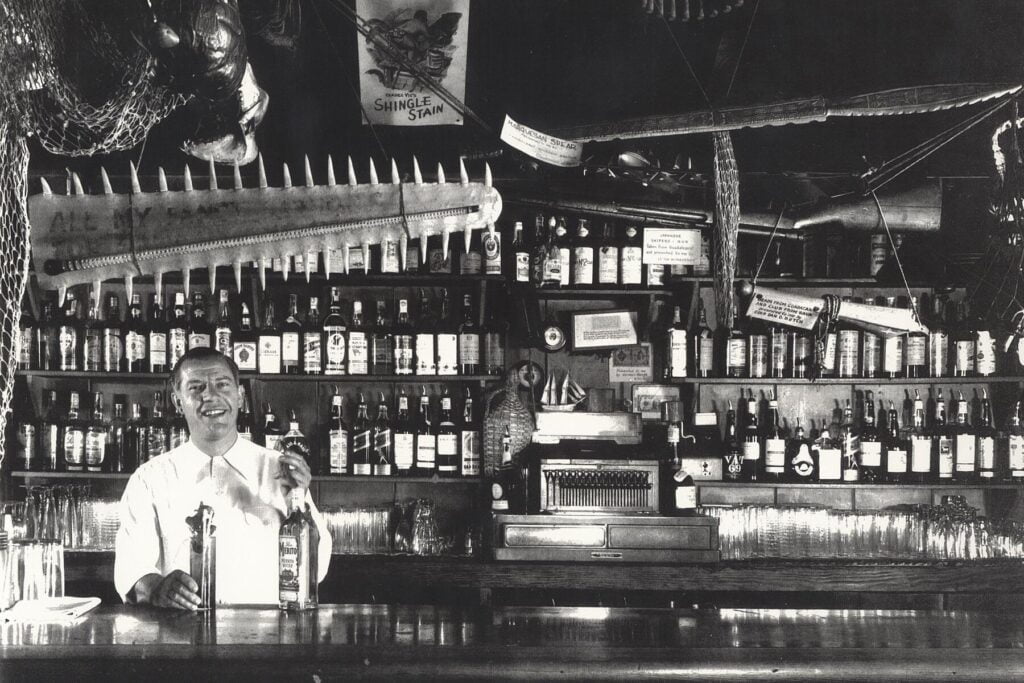
The story of rye whiskey in America started with the arrival of early settlers in the northeastern states, particularly in Pennsylvania and Maryland.
These pioneers brought their knowledge of distilling and a sturdy grain that would become the foundation of American rye whiskey: rye.
During the American Revolution, rye whiskey production saw a significant increase.
With the British blockade of molasses imports from the Caribbean, the colonists faced a shortage of rum, their preferred spirit.
As a result, they turned to locally produced rye whiskey as a substitute, further solidifying its place in American drinking culture.
Distillation Process of Rye Whiskey
Ingredients and Mash Bills
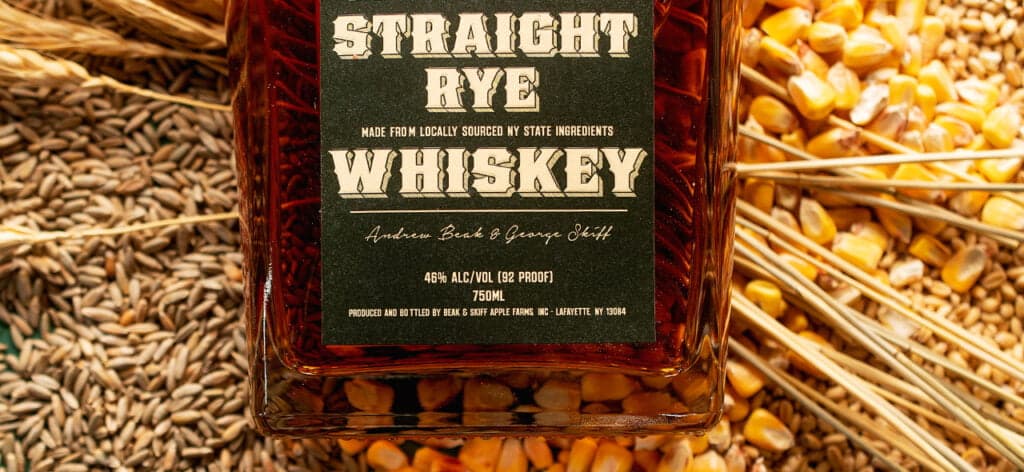
Rye whiskey is defined by its high rye content in the mash bill.
By law, rye whiskey must contain at least 51% grain, imparting a distinctive spiciness and bold flavor to the spirit.
The remaining mash bill can include other grains, such as corn and malted barley, which add subtle nuances and complexity to the whiskey’s overall profile.
The combination of the dominant rye grain and the supporting grains creates a unique flavor profile that sets rye whiskey apart from other whiskey styles.
Impact of Rye Grain on Flavor:
- Rye grain contributes to the whiskey’s peppery and robust character
- The high rye content imparts a spicy and bold flavor profile
- Secondary grains help to balance the spiciness with hints of sweetness and depth
Mashing and Fermentation
The mashing process is a crucial step in the production of rye whiskey.
The rye grains are mashed during this stage to convert the starches into fermentable sugars.
The mash is then heated with water to initiate the starch conversion process. Once it is ready, yeast is added to ferment it.
The fermentation period is essential for developing the complex flavors and aromas that define rye whiskey.
Challenges of Fermenting Rye
- Rye has a high protein content, which can make fermentation more challenging.
- The higher protein content contributes to rye whiskey’s spicier and more robust flavor.
- Careful monitoring and control of the fermentation process are necessary to achieve the desired flavor profile.
Distillation Techniques
Rye whiskey can be distilled to a higher proof than bourbon, allowing for a more concentrated and intense flavor profile.
The distillation process takes place in copper stills, which help to enhance the purity and character of the spirit.
The higher distillation proof of rye whiskey results in a bolder and spicier final product with prominent notes of pepper and cinnamon.
Impact of Higher Distillation Proof on Rye Whiskey
- Higher proof allows for a more concentrated and intense flavor profile
- The increased alcohol content enhances the rye’s spicy and bold character
- The resulting spirit is assertive and complex, with a long and warming finish
Aging Process of Rye Whiskey
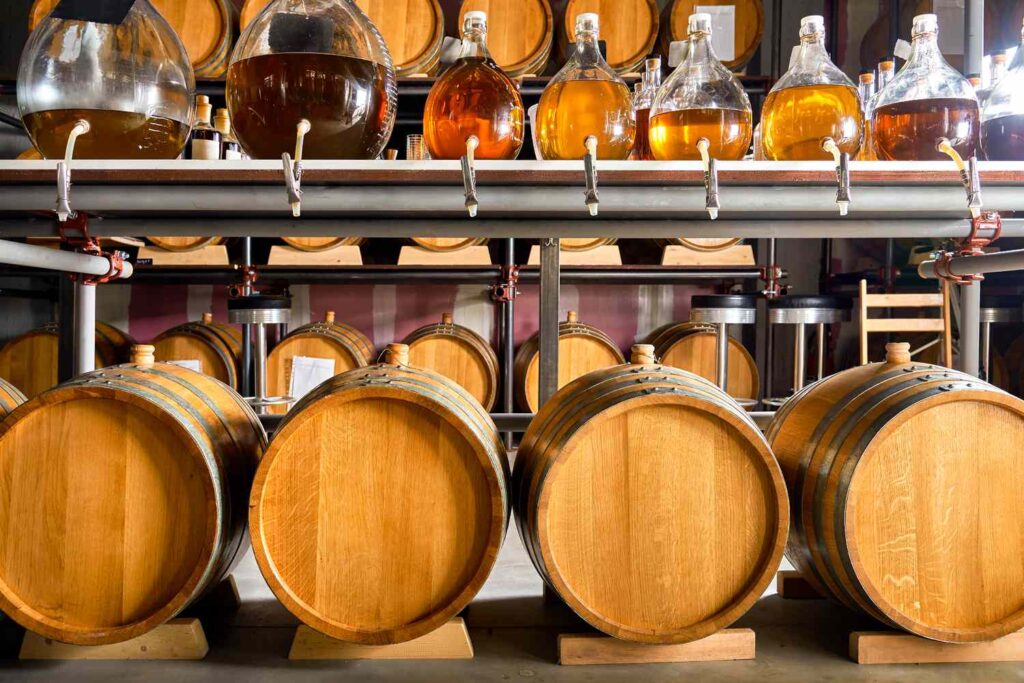
Aging plays a crucial role in defining the distinct flavor profile of rye whiskey.
The maturation process in charred oak barrels is essential for developing rye whiskey’s signature spicy and bold character.
During this time, the whiskey interacts with the wood, extracting flavors and undergoing chemical changes contributing to its final taste and aroma.
Typical Aging Period
Rye whiskey is often aged 2-4 years, although no strict minimum aging requirement exists.
This relatively shorter aging period compared to other whiskeys is a common practice among rye whiskey distillers.
The decision to age rye whiskey for this duration is influenced by the desire to preserve the grain’s natural spicy characteristics while allowing enough time for the whiskey to develop complexity.
Dominant Flavor Notes
Rye whiskey is known for its dominant flavor notes of cinnamon, cloves, and black pepper.
These spicy and warming characteristics directly result from the rye grain and are further enhanced by aging.
The charred oak barrels contribute additional layers of complexity, with subtle hints of vanilla and caramel that complement the rye’s natural spiciness.
Bourbon
Origins of Bourbon
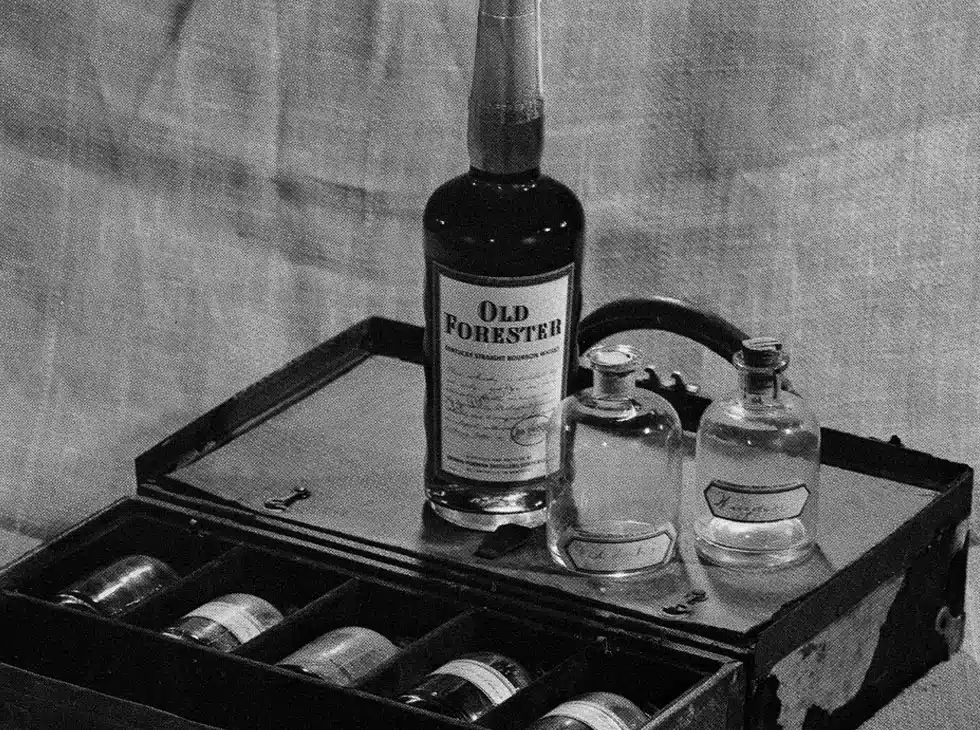
Kentucky’s fertile soil and the birth of Bourbon: Kentucky, with its rich soil and rolling hills, was the perfect birthplace for Bourbon.
The region’s abundant natural resources, including limestone-filtered water and a climate well-suited for aging whiskey, set the stage for bourbon’s rise to prominence.
Bourbon’s cultural roots can be traced back to the influence of Scottish and Irish immigrants who settled there.
These settlers brought their time-honored distilling techniques and adapted them to the new world’s ingredients and conditions.
In 1964, the U.S. Congress recognized bourbon as a distinctive product of the United States, mandating that it must be made with a minimum of 51% corn and aged in new, charred oak barrels.
These legal requirements helped to ensure consistency and quality across the bourbon category.
Distillation Process
Ingredients and Mash Bills
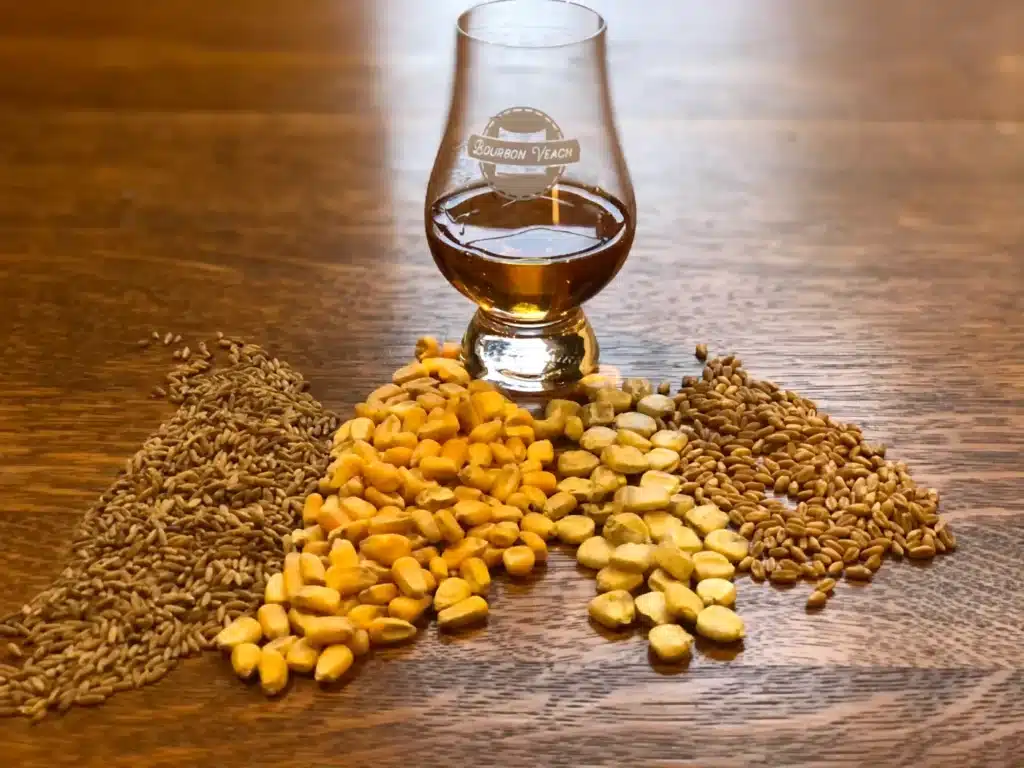
Bourbon, on the other hand, is characterized by its high corn content in the mash bill.
The whiskey must contain at least 51% corn to be legally classified as bourbon.
This dominant presence of corn gives bourbon its signature sweetness and smoothness.
The remaining mash bill can include other grains such as rye, malted barley, and wheat, each contributing unique flavors to the final product.
The interplay between the corn and the supporting grains creates bourbon’s distinct flavor profile.
Influence of Corn on Bourbon’s Flavor
- Corn provides bourbon with a sweet and creamy mouthfeel
- The high corn content imparts a smooth and mellow character
- Rye adds a hint of spice, while wheat enhances the whiskey’s smoothness
Mashing and Fermentation
Bourbon’s mashing process is similar to rye whiskey but focuses on corn as the primary grain.
The corn is mashed to convert its starches into fermentable sugars, creating a base for the bourbon’s flavor profile.
Once the mash is prepared, yeast is added to initiate fermentation.
Due to corn’s higher sugar content, the fermentation process for bourbon tends to be smoother and more efficient than rye whiskey.
Role of Corn in Bourbon’s Fermentation
- Corn’s natural sweetness promotes a more active fermentation process
- The higher sugar content of corn contributes to bourbon’s sweeter and milder flavor profile
- The smoother fermentation process helps to create a more balanced and approachable whiskey
Distillation Techniques
In contrast to rye whiskey, Bourbon must be distilled to no more than 160 proof.
This lower distillation proof ensures a smoother and more approachable final product.
Like rye whiskey, bourbon is distilled in copper stills, promoting a clean and pure spirit.
The lower distillation proof helps to retain more of the corn’s natural sweetness, producing a whiskey with a balanced and mellow flavor profile.
Effects of Lower Distillation Proof on Bourbon
- Lower proof results in a smoother and more approachable whiskey
- The reduced alcohol content allows for a more balanced flavor profile
- The lower proof retains more of the corn’s natural sweetness and creates a whiskey with notes of caramel, vanilla, and oak
The distillation process plays a crucial role in shaping the distinct flavor profiles of rye whiskey and bourbon.
The mash bill, fermentation, and distillation techniques all contribute to the unique characteristics that define these two iconic American whiskey styles.
Aging Process of Bourbon
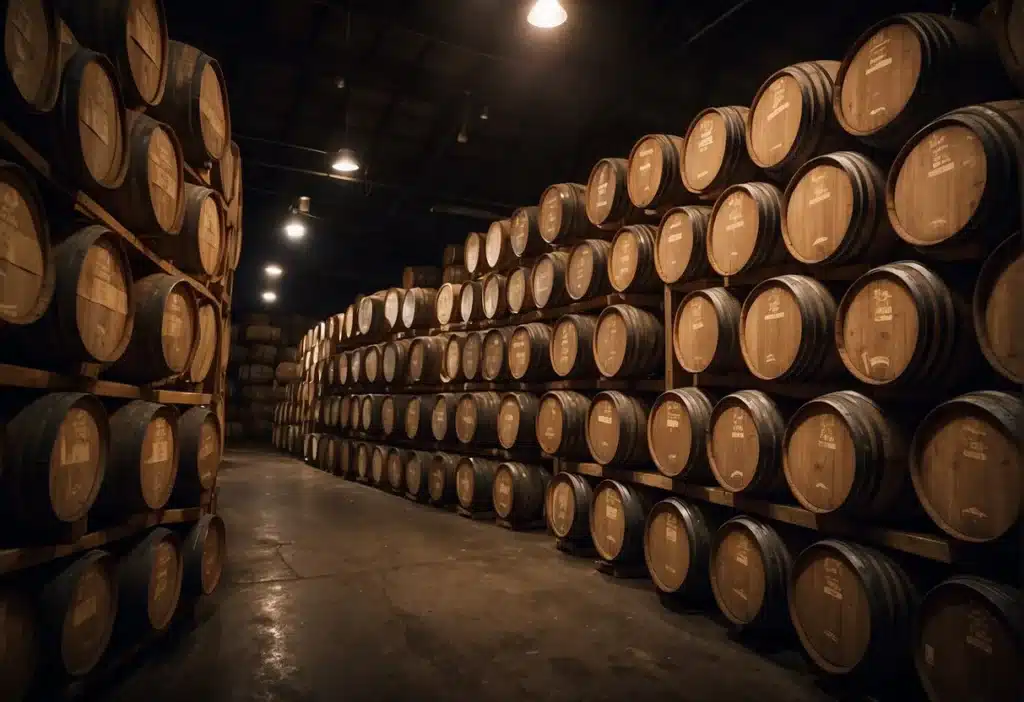
Aging is fundamental to bourbon production, significantly shaping the whiskey’s signature flavor profile.
The maturation process in charred oak barrels is crucial not only for developing bourbon’s distinctive taste but also for Still; it is also governed by legal mandates that ensure consistency and quality across the industry.
Minimum Aging Period
To be legally classified as “straight bourbon,” the whiskey must be aged for at least two years in new, charred oak barrels.
These legal requirements set bourbon apart from other whiskeys and contribute to its unique flavor profile.
Using new barrels ensures that the whiskey extracts the maximum amount of flavor compounds from the wood, while the charring process adds depth and complexity to the final product.
Climatic Influence
While the legal minimum aging period for straight bourbon is two years, most bourbons are aged for significantly longer.
The typical aging period for bourbon ranges from 4 to 12 years, with some premium expressions being aged for even longer.
The distillers’ desire to create a more complex and nuanced flavor profile influences the decision to age bourbon for extended periods.
The temperature fluctuations cause the whiskey to expand and contract within the barrels, facilitating greater interaction between the liquid and the wood.
This dynamic aging process contributes to developing bourbon’s rich and deep flavor profile.
Influence of Longer Aging on Flavor Profile
The longer a bourbon is aged, the more time it has to extract flavors and undergo chemical changes within the charred oak barrels.
As the whiskey interacts with the wood, it develops a greater depth of sweetness and complexity.
The extended aging period allows for the development of rich caramel, vanilla, and oak flavors characteristic of well-aged bourbons.
Prolonged aging also helps to smoothen and mellow the whiskey, rounding out any harsh edges and creating a more balanced and refined flavor profile.
The result is a smooth, rich, and full-of-character bourbon with a complexity that can only be achieved through patient maturation.
Conclusion
The distinction between rye whiskey and bourbon lies in their unique ingredients, distillation processes, and aging techniques.
Rye whiskey’s bold, spicy character is derived from its high rye content and shorter aging periods, while bourbon’s smooth, sweet profile results from its corn-rich mash bill and longer maturation.
These differences make each whiskey suitable for different cocktails and flavor preferences.
Understanding the nuances between these two iconic American spirits enhances your appreciation for their craftsmanship and empowers you to make informed choices when selecting the perfect whiskey for your needs.
Whether you prefer the assertive kick of rye or the mellow embrace of bourbon, exploring the rich histories and production methods behind these whiskeys is a rewarding journey for any spirits enthusiast.
So, which will you choose – rye or bourbon?




